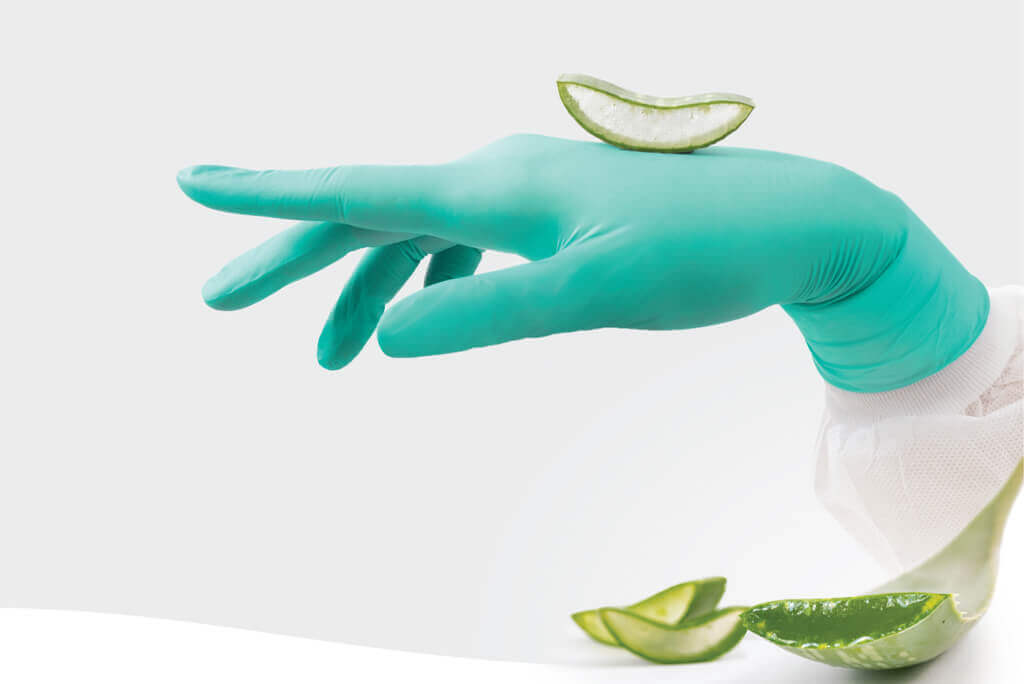As dental practitioners, we grapple with numerous challenges concerning personal protective equipment (PPE). And I am not just talking about donning and doffing errors1— which can also be quite common. I am talking about the intersection of comfort, fit, cost, and functionality as a delicate balance to maintain.
When it comes to gloves, dental professionals require products that fit impeccably and provide tactile sensitivity without getting in the way of dexterity. Bonus points would be for products that minimize physical discomfort during prolonged use, are not bulky, and are aesthetically pleasing.
There are so many things we should consider, and the health of our hands should be at the top of that list. Unfortunately, the person ordering the gloves in a clinical setting usually considers the dentist’s preference and the costs, but they often do not consider the needs of the other team members, whether size/fit, material, or the right quality for the specific procedure they are performing.
Dental offices often get stuck in the rut of ordering the same gloves. It is only when there is an issue, or on the off chance they try out a new glove that they realize how much better – or worse – other options can be compared to what they already use.
I often think of it like a Goldilocks situation; for some team members, the glove may be just right, but for others, the glove may be too small or too big, or too thin or too thick. So, what are all the things you should consider when choosing a glove that’s just right for you?
What Makes Up a Glove We Love?
Finding a glove that fits matters, but frequently, dental professionals fail to realize that their gloves do not fit correctly. They may need an extra small size, but as the rest of the team are using small or medium sizes, they just use what is there, reducing their grip, dexterity and tactile sensitivity. Wearing gloves that are too tight for extended periods can increase the risk of Musculoskeletal Disorders (MSDs) in dental healthcare professionals by restricting blood circulation, increasing muscle tension, and compressing nerves. Properly fitted gloves and ergonomic practices are essential to prevent MSDs and ensure the comfort and safety of dental professionals during their work.
Integrity is also essential. Factors such as glove material, wearing time, activities performed, fit, and even brand can influence the integrity of the glove.3 Glove failure can increase the risk of contamination and infection, affecting patient safety, yet this is not something we often consider. We have been so used to wearing PPE for years that we are almost numb to the nuances. Not all gloves are manufactured with the same quality standards, so choosing a glove based on price is not always the way to go. Carefully examine your gloves for pinholes and areas of inconsistency. If you find yourself throwing away gloves that are ripping as you are donning, how much money is the practice really saving?
On a subtler note, aesthetic preferences also matter. Research indicates that colors used in medical settings elicit varying emotional responses from patients and that gloves in warmer and less sterile colors could benefit the patient experience.
When Protection Becomes a Problem
Due to continuous glove use, many dental health professionals suffer from dermatological issues such as allergic contact dermatitis (ACD).1 One common cause of ACD is prolonged exposure to gloves, specifically those made with accelerants in manufacturing. Accelerants are chemicals that speed up the curing process of rubber in the manufacturing of gloves.1
Dithiocarbamates, thiurams, and mercapto benzothiazoles (MBT) are some of the sulfur-based chemical accelerators used as accelerants to speed up the molecular processing of nitrile and vinyl in the latex or synthetic latex.2 The most common chemicals to cause an allergic reaction are thiuram and dithiocarbamates. Some may develop sensitivity or an allergic response to these accelerants, leading to ACD.
ACD symptoms often include redness, itching, swelling, and the formation of small blisters. I have witnessed this and have seen how, over time, the affected skin may become dry, thickened, and scaly. Flare-ups can significantly impact work and personal lives. It can also make us feel self-conscious about how unsightly our hands look in front of patients. The discomfort and itchiness may distract dental professionals from performing important infection prevention tasks like hand hygiene due to the discomfort experienced while washing hands or using alcohol-based hand rub. The alcohol rubs can burn the skin, causing significant discomfort.
The impact on the quality of life in our professional and personal lives can be massive, all because we use gloves that irritate our skin. To mitigate the risk of ACD, dental professionals can opt for accelerator-free gloves or gloves made from alternative materials that do not require accelerants.
Over the years, things have certainly improved. Latex-free PPE is readily available. There are now hypoallergenic gloves and more innovations are evolving to make dental PPE more user-friendly. With input from those who use the products, the future of dental PPE looks promising.
Given these factors, glove manufacturers who regularly innovate and refine their products are invaluable. This might look like developing gloves that offer a superior fit and comfort, using hypoallergenic materials and factoring in aesthetic preferences in their design. If the aim is to enhance the user experience for dentists and patients, striking a balance between functionality, safety, comfort, and style – sign me up.
Designed With the Needs of Healthcare Professionals In Mind
Considering all these factors, it is clear why products like the Ocean Pacific TruAloe gloves have been brought to market. With these gloves, Medicom’s promise of ‘making each day in your practice a little easier’ checks out.
These gloves are designed with the needs of healthcare professionals in mind, combining protection with comfort. They are infused with aloe and are accelerator-free. Aloe vera helps to keep skin moisturized and heals the cracks and sores often caused by previous gloves, while the absence of accelerators in the manufacturing process helps prevent further irritation.4 They also have textured fingertips, which provide a secure grip, even when wet, and are an aesthetically pleasing emerald green!
So, what makes up a glove we love? It comes down to the protection, quality, fit and the feel, and it is no easy feat to find one that works for all the practitioners in your clinic. Even in the most clinically intense settings, there is room for products that cater to our human needs and preferences. As we continue to push for innovation and refinement of dental PPE, we bring ourselves closer to a future where dental professionals can perform their tasks without compromising their comfort or health, enhancing the overall experience for both practitioners and patients.
1 “Are dental professionals properly using PPE? | DrBicuspid.com.” 28 Sept. 2022, https://www.drbicuspid.com/dental-hygiene/infection-control/article/15379943/are-dental-professionals-properly-using-ppe. Accessed 16 Oct. 2023.
2 “Chemical Accelerators – the Glove-Related Allergen of the 21st ….” https://www.fishersci.com/us/en/scientific-products/publications/lab-reporter/2019/issue-2/chemical-accelerators-glove-related-allergen-21st-century.html. Accessed 18 Oct. 2023.
3 “The durability of examination gloves used on intensive care units.” 20 May. 2013, https://bmcinfectdis.biomedcentral.com/articles/10.1186/1471-2334-13-226. Accessed 18 Oct. 2023
4 “The Effect of Aloe Vera Clinical Trials on Prevention and Healing of ….” https://www.ncbi.nlm.nih.gov/pmc/articles/PMC6330525/. Accessed 18 Oct. 2023.



 English (US)
English (US)


